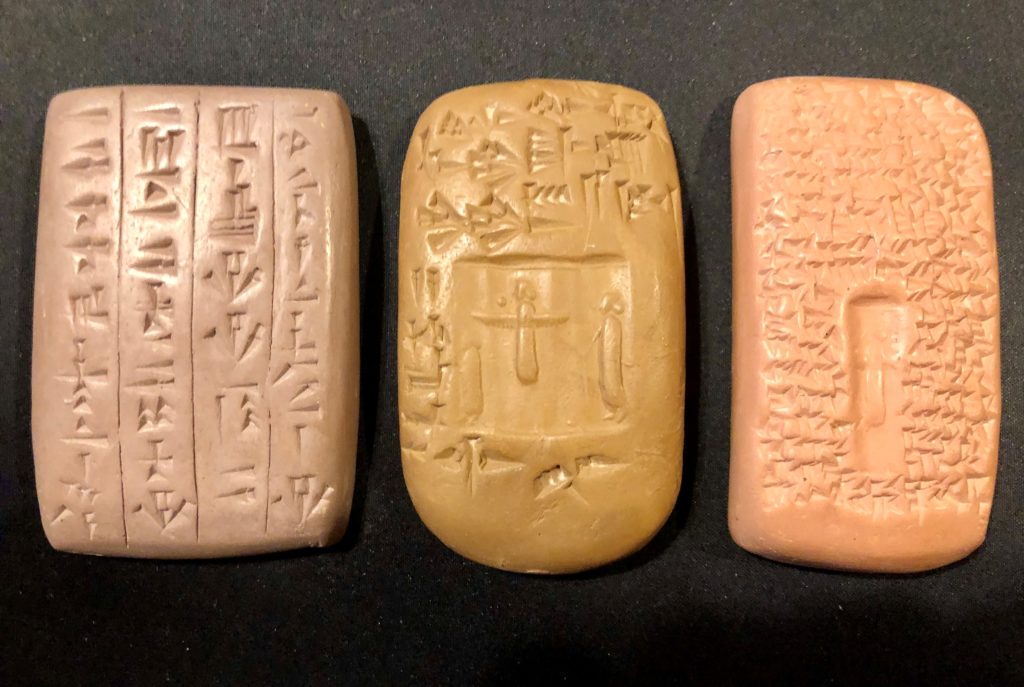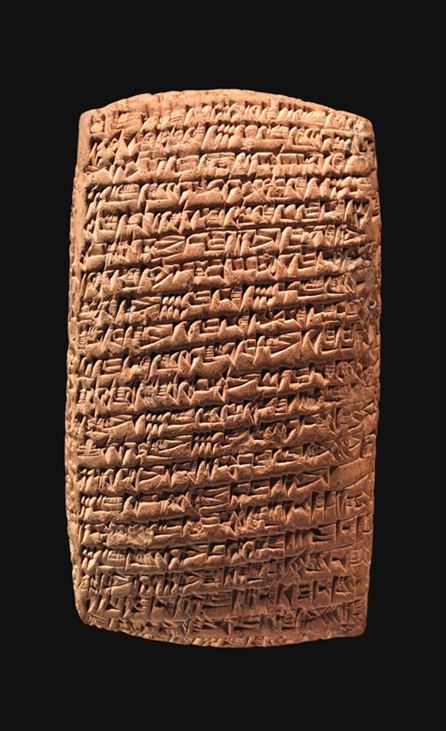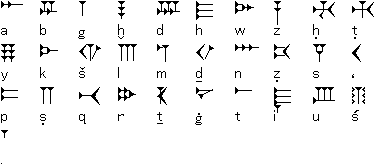I love everything ancient! That particularly goes for ancient writing systems. My fascination started with Egyptian hieroglyphics, but soon turned toward cuneiform. Cuneiform is an ancient writing system that developed in Mesopotamia around 3400 B.C., and it is the oldest form of writing in the world.

Cuneiform is not an alphabet, but rather a set of characters, lots of them, used to put spoken words into written form. There are between 600 to over 1000 characters that can be used to write syllables and words. Since each character represents a sound, it could be used to write in any language, even English!
Cuneiform developed from a series of simple pictures, called pictograms or ideograms that stood for objects and ideas, respectively. Soon, these pictures were used to record sounds.

Cuneiform was typically written on small clay tablets that easily fit into the palm of the scribe’s hand. The scribe would use a reed stylus to press wedge-shaped characters into the wet clay. These wedge-shaped characters gave cuneiform its name, which comes from the Latin cuneus, which means “wedge.”
If you would like to try your hand at writing cuneiform, all you need is some clay and something to use as a stylus, like a toothpick or chopstick. Then shape your clay into a tablet shape. You can use the pictures to inspire you. Then, experiment with making the shapes in the clay with your stylus. Don’t worry if you make a mistake, you can erase by smoothing out the clay!

As a challenge, try writing your name. You can use the cuneiform chart above. Remember it is not an alphabet, so you will spell it out using sounds. As long as it sounds right when you read it out loud, it is perfect! Send us your pictures when you are done, we’d love to see your work!

